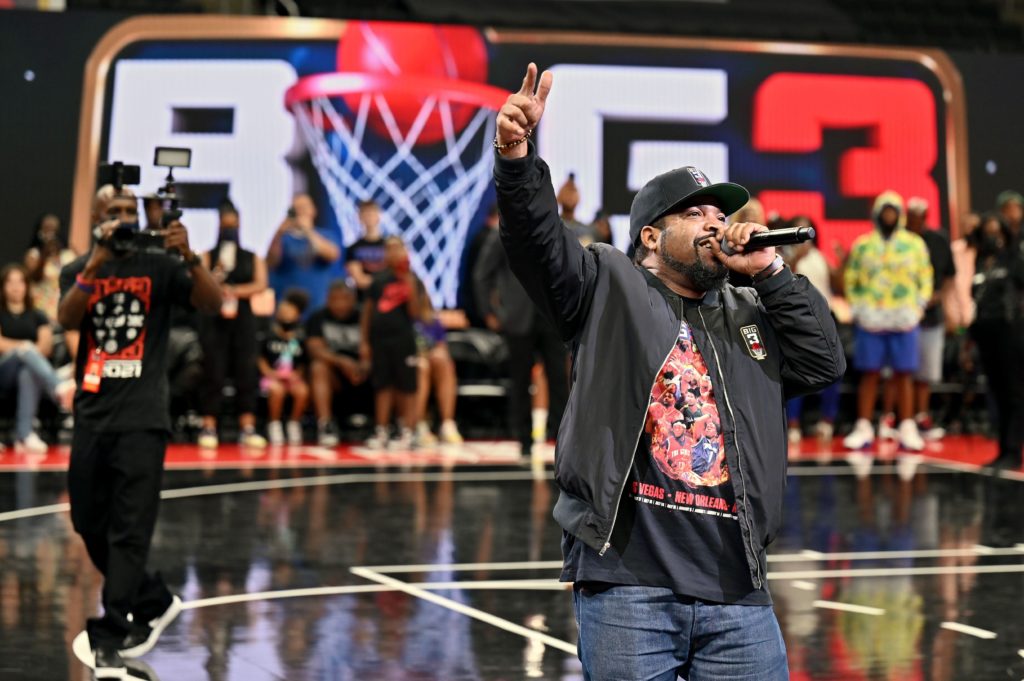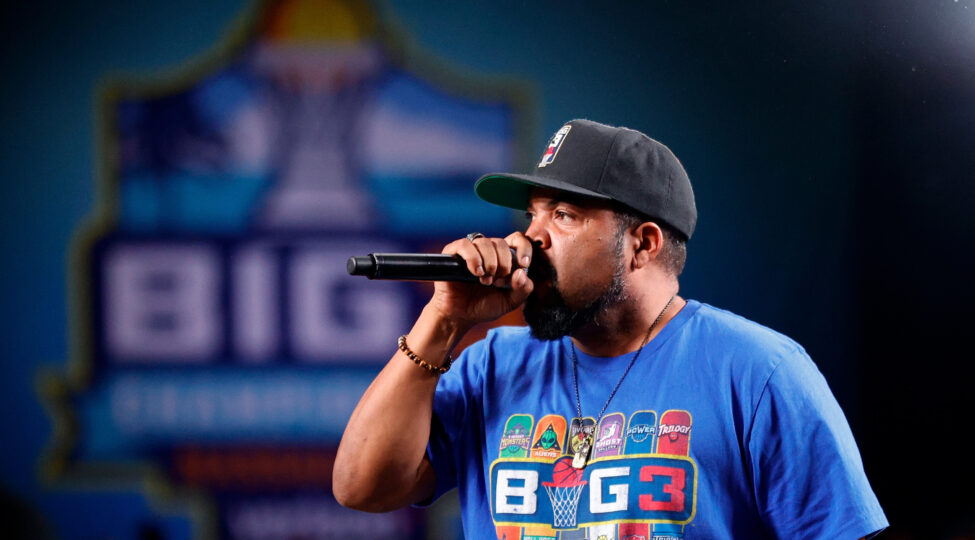By Randall Williams
“I think we are already cousins,” the iconic MC said of a possible relationship between the BIG3 and the NBA. “It’s really about us locking in and figuring out the best ways for us to work.”
As Ice Cube prepares for the BIG3 basketball league’s fifth season that will once again be powered by Monster Energy, he and the league are looking for a different kind of signature partnership: One with the NBA.
On the heels of the XFL and NFL announcing a formal collaboration, the rapper, actor, and entrepreneur born O’Shea Jackson called a shot of his own.
This is great for the XFL. @thebig3 has been trying to work with the @NBA for years with no luck. Many NBA owners would love to invest in the BIG3, but the NBA views us as a competitive league and not a complementary league. Really? I seen a lot of @thebig3 innovations in the NBA https://t.co/eUE0UEWqlR
— Ice Cube (@icecube) February 21, 2022
Boardroom spoke to the legendary MC about the tale behind the tweet and his vision for a potential NBA partnership for the innovative basketball league.
“Our first business model was to use former NBA players, and we felt like that would spark interest in the league and in some ways give the league instant credibility,” Cube told us in a phone interview. “In doing that, we initially went to the NBA [and] offered them a percentage of the BIG3 and they said thank you but no thank you. We never thought this would stop what we were doing. It would be nice, but we believe in the sport.”
If the argument against Cube’s dream partnership is that the BIG3 is too small and lacks traction with fans, he’s not hearing it — and he’s got numbers to point to. After canceling its 2020 season due to the COVID-19 pandemic, the BIG3’s 2021 season saw it reach new heights. The 10-week campaign averaged 451,000 viewers across 22 hours of live games on CBS. The 451,000-viewer mark is higher than Major League Soccer’s own average, which was reported as 276,000 viewers across 31 regular-season games in 2021. At its championship game peak, the MLS Cup Final slightly beat the BIG3, topping off at 1.6 million viewers versus the basketball league’s 1.47 million.
A closer look at the viewership numbers from the back half of the 2021 season:
- Week 6: 428,000
- Week 7: 482,000
- Week 8: 506,000
- Week 9: 531,000
- Week 10: 515,000
Still, the NBA has shown no interest to date regarding any formal team-up.
Meanwhile, Cube will be among the first to note that the BIG3 is not looking for a lifeline to keep them afloat. “It’s not really like we’re dying to merge. We just want to make sure we are complementary,” he said. “There are owners that have shown interest in wanting to buy a piece of the BIG3, but the bylaws of the NBA say you can’t purchase a ‘competitive league,’ so that raises eyebrows to us.”
Here is a look at the fine print.
Article 3 of the NBA’s constitution is titled “conflicts of interest.” As Section B reads verbatim: “No Owner shall, directly or indirectly, lend money to or become a surety or guarantor” for anyone else granted membership in the league. Yes, there are a couple of narrow exceptions to this rule — we won’t belabor them here — but despite what appears to be some healthy room for interpretation, the NBA has prevailingly understood the rule as barring the sort of relationship Cube has been dreaming of.Sign Up For Our Newsletters
“We have been supportive and have worked cooperatively with the BIG3 since its inception,” said NBA spokesperson Mike Bass in a statement. While an official partnership has yet to happen, the league has made its arenas available to the BIG3. The BIG3 has hosted games at the Brooklyn Nets’ Barclays Center, the Los Angeles Lakers’ Crypto.com Arena formerly known as the Staples Center, the Timberwolves’ Target Center, the Bulls’ United Center, the Bucks’ Fiserv Forum and more.
Even if the league chooses not to partner with the BIG3, Cube said the roadblocks in the way of the BIG3 working with the NBA owners and the NBA’s sponsors have to stop. “If they don’t want to work with us, that fine, [but] we can’t have anybody blocking our progress. So if they do have a bylaw saying that some of their people cannot invest in us or they are telling sponsors to stay away from us because we’re not a part of the NBA, that has to stop. We have to figure out a way to get around that, even if we never work together.”
The BIG3 co-founder said he doesn’t have any proof that the NBA is, say, blocking its broadcast partners or official sponsorship partners from working with the BIG3, but frustrations remain. “We know how people act when they are in business with the NBA. So if they feel like they can’t do business with both, that’s not true and it’s a shame,” he said.

Earlier versions of this conversation have played out before. Nearly 10 years ago, Kevin Garnett tried to purchase a minority stake in Italian soccer club AS Roma, but the NBA blocked his purchase. This was due to James Palotta, a minority owner of the Boston Celtics, being a principal investor in Roma at the time. As the fine print required, Garnett could only purchase equity in a sporting organization that included no existing stakeholder involved with the NBA.
The bylaws aren’t likely to be subject to radical re-interpretations any time soon, but Cube notably doesn’t view the Association as a rival at all. “We’re not a competitive league. By no means are we able to compete with the NBA. They’re on their 75th year, and we’re on our fifth year. We’re doing 3-on-3, they’re doing 5-on-5. We’re not competing in any way, shape, or form.”
Regardless of whether the two leagues ultimately work together, the BIG3 has every intention of powering forward. The organization recently announced a re-up on its partnership with Monster Energy and said the team-up will feature new activations this year. Additionally, tryouts for players interested in competing in the league start on March 4 in Dallas, Texas. The tryouts will travel to five different locations over the course of five weeks until it finishes in April in Chicago.
And the whole way through, the man once known as AmeriKKKa’s Most Wanted will hold fast to his vision of a BIG3 future that includes space carved out for the NBA.
“I think they can run a lot of innovation through us before they take it to the NBA. I know they have the NBA G League, but the BIG3 has a higher profile,” Cube concluded. “I think we are already cousins, we are just step-cousins right now. It’s really about us locking in and figuring out the best ways for us to work.”



